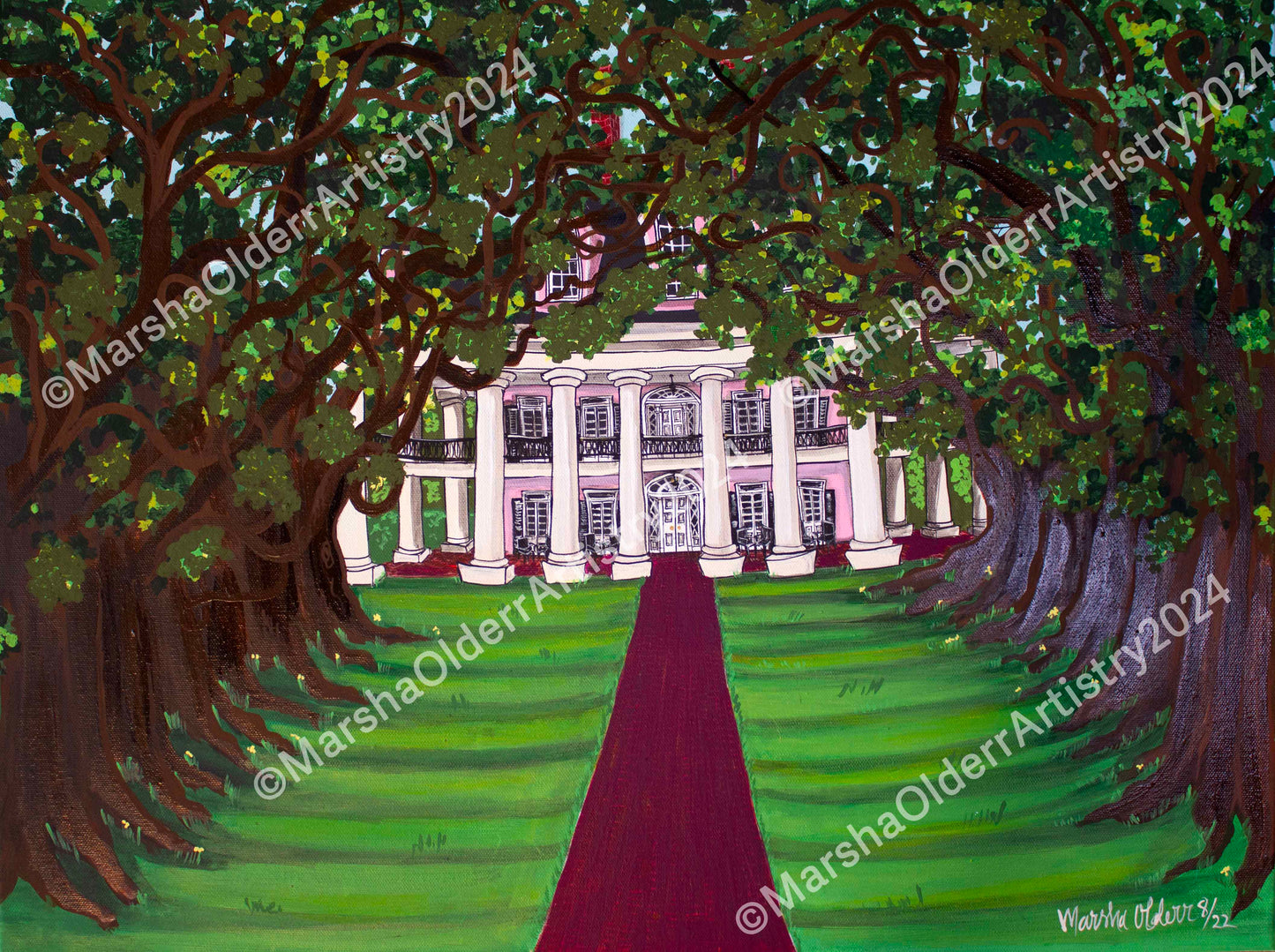Marsha Olderr Artistry
Oak Alley (Prints)
Oak Alley (Prints)
Couldn't load pickup availability
Oak Alley is a well-known landmark for any living in the New Orleans area. The former plantation is named for its stunning visual feature, the alley (Fr. allée)of a double row of southern live oak trees about 800 feet long, planted in the early 18th century — long before the present house was built. The allée runs between the home and the Mississippi River.
The setting of the trees and the plantation has been in films and countless photographs. The alley is breathtaking and seeing the stupendous plantation building at the end of the lane makes this a picture worthy of a fairytale.
The Oak Alley plantation was established to grow sugarcane, by the French Creole Valcour Aime when he purchased the land in 1830. Aime, known as the "King of Sugar," was one of the wealthiest men in the South. In 1836, Valcour Aime exchanged this piece of property with his brother-in-law, Jacques Telesphore Roman for a plantation owned by Roman. The following year people enslaved by Jacques Roman began building the present mansion under the oversight of George Swainy. The mansion was completed in 1839. Roman's father-in-law, Joseph Pilié, probably designed the house.
An interesting story originating from Oak Alley was the creation of the paper shell pecan, which could be cracked using one's hands. The gardener and slave Antoine, successfully grafter various varieties to create the new paper shell pecan in the winter of 1846. The new pecan called the Centennial Variety pecan was entered in the 1876 Centennial Exposition in Phila., PA where it won an award.
Jacques Roman died in 1848 of TB and the estate's management was taken over by his wife, Marie Therese Josephine Celina Pilié Roman (1816–1866). Celina did not have the skills to run a sugar plantation; her heavy spending nearly bankrupted the estate. In 1859 her son, Henri, took control of the estate and tried to turn things around but he also was unsuccessful. In 1866, his uncle, Valcour Aime, and his sisters, Octavie and Louise, put the plantation up for auction and it was sold for US$32,800 (~US$517,433 in 2022) to John Armstrong and Hubert Bonzano.
In 1925, Andrew Stewart bought the plantation as a gift to his wife, Josephine. The Stewarts ran it as a cattle ranch and were the last owners to live on the plantation. Josephine Stewart left the historic house and grounds to the Oak Alley Foundation when she died in 1972, which opened them to the public. (Information taken from Wikipedia, https://en.wikipedia.org/wiki/Oak_Alley_Plantation)
Print Sizes: 18" x 24" 9" x12"
Papers:
Luster paper (Glossy) from Hahnemuhle is a 290 gsm. 11.4 mil thickness, bright white luster paper which features a microporous resin coating and a 96% opacity coating.
Fine Art paper (Matte) is a bright archival paper--350 gsm, 19 mil. 100% cotton rag media. This acid-free Paper features a bright textured finish and yields prints with a wide color gamut and deep blacks.
Share


